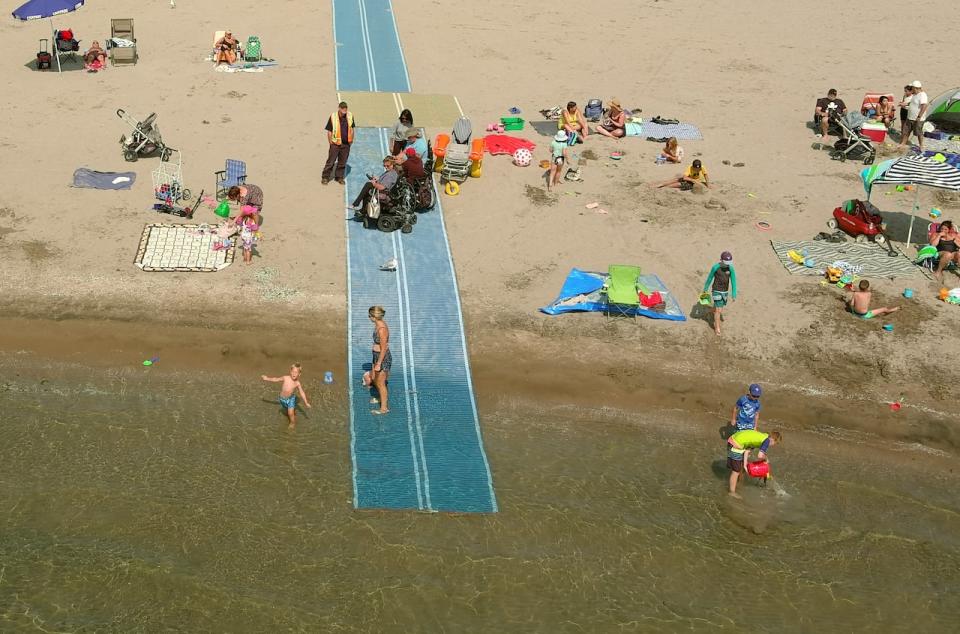Only 3 Toronto beaches are accessible. Advocates want better

When she isn't swimming, East York resident Kim Lumsdon uses a cane to help her get around.
That's especially the case at Cherry Beach. With sticks and stones jutting from the steep, uneven ground, Lumsdon wishes there was a better way to navigate the sand beneath her.
"I have to watch that I don't fall," she said. "It's honestly very dangerous."
Devices such as Mobi-mats allow people to move across the sand to the water on a sturdy platform, which would make it easier for people like Lumsdon to cross the beach. They can be found in beaches outside of the city or throughout the GTA, such as at Wasaga Beach, Cobourg's Victoria Beach, Centennial Beach in Barrie and Burlington Beachway.
But in Toronto, the city says only three of its 10 supervised swimming beaches — Woodbine, Ward's Island and Centre Island — have accessibility features like mats, decks or beach wheelchairs that people can reserve ahead of their visit. But even with those devices, locals have reported difficulty accessing the waterfront along Woodbine Beach for years.
It's something Trenton, Ont.-based accessibility consultant Wade Watts says he wants to see become more widespread.
"It doesn't make sense to me," he said.
According to the most recent data from the City of Toronto and Statistics Canada, the city is home to at least half a million people with disabilities. Watts, who uses a wheelchair, says the city is missing the opportunity to make beach-going an inclusive activity this summer season — not just for people with disabilities, but families and children, too.

Mobi-mats are mats that can be placed along the beach floor to help people with disabilities reach the water's edge. Pictured is an installation by Watts Accessibility Consulting in Cobourg, Ont. (Submitted by Wade Watts)
It's a problem across Canada, he says. Having worked with governments across the country to make beaches accessible, he estimates less than 15 per cent of them are accessible.
And while making a beach accessible can costs tens of thousands of dollars, he said the biggest hurdle isn't a financial one.
"The biggest barrier faced not just by persons with disability but with accessibility in general, are attitudinal barriers," he said.
City says it's working on making beaches more accessible
Lumsdon wonders why accessibility isn't consistent across the city.
"They should have done something with this beach if they're going to do [it] with other beaches," she said.
In an email to CBC Toronto, the city said it's continuing to "investigate opportunities" to increase accessibility in parks and beaches. It also said it tries to meet standards mandated under the Accessibility for Ontarians with Disabilities Act "wherever operationally feasible," which includes making all beach access routes and boardwalks accessible.
Tammy Adams, a member of the TTC's advisory committee on accessible transit, says people also have problems navigating sandy areas along Toronto's waterfront that aren't considered official beaches.
She wants the city to consult with members of the community on how to improve their experiences.
"I wish they would have some kind of meeting, or have a session with us," she said. "We could give them feedback about our lived experience and and what they need to do to make it more accessible."

 Yahoo Sports
Yahoo Sports 
